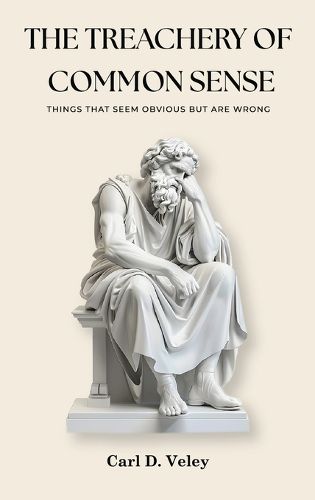Readings Newsletter
Become a Readings Member to make your shopping experience even easier.
Sign in or sign up for free!
You’re not far away from qualifying for FREE standard shipping within Australia
You’ve qualified for FREE standard shipping within Australia
The cart is loading…






This title is printed to order. This book may have been self-published. If so, we cannot guarantee the quality of the content. In the main most books will have gone through the editing process however some may not. We therefore suggest that you be aware of this before ordering this book. If in doubt check either the author or publisher’s details as we are unable to accept any returns unless they are faulty. Please contact us if you have any questions.
This thought-provoking book explores how deeply ingrained beliefs-often rooted in what seems obvious-continue to shape human thinking and society, even when proven wrong. Using the historical example of the flat Earth theory, the author highlights how, for millennia, humans were certain the Earth was flat based on everyday observations. The Earth appeared flat, the horizon looked level, and these perceptions became unquestioned truths. However, over time, scientific reasoning and evidence proved that the Earth is round, a realization met with resistance and persecution for those who suggested otherwise.
The book draws parallels between this historical misconception and contemporary issues, showing how people today often hold firmly to beliefs despite overwhelming evidence to the contrary. Whether it's climate change denial, vaccine skepticism, or conspiracy theories, the author demonstrates how cognitive biases like confirmation bias and cognitive dissonance fuel these false beliefs. People tend to seek information that supports their worldview, even if it contradicts scientific consensus.
Furthermore, the book discusses the role of social media in amplifying misinformation, creating echo chambers where individuals are surrounded by reinforcing beliefs. The need for simplicity and control in an increasingly complex world leads people to embrace narratives that offer easy explanations, regardless of their accuracy.
Ultimately, the book challenges readers to confront their biases, question their assumptions, and embrace intellectual humility. It argues that progress comes from being open to change, even when it challenges deeply held beliefs. Just as the flat Earth theory was eventually overturned, the book suggests that many modern misconceptions can be corrected through critical thinking and a willingness to engage with uncomfortable truths.
$9.00 standard shipping within Australia
FREE standard shipping within Australia for orders over $100.00
Express & International shipping calculated at checkout
This title is printed to order. This book may have been self-published. If so, we cannot guarantee the quality of the content. In the main most books will have gone through the editing process however some may not. We therefore suggest that you be aware of this before ordering this book. If in doubt check either the author or publisher’s details as we are unable to accept any returns unless they are faulty. Please contact us if you have any questions.
This thought-provoking book explores how deeply ingrained beliefs-often rooted in what seems obvious-continue to shape human thinking and society, even when proven wrong. Using the historical example of the flat Earth theory, the author highlights how, for millennia, humans were certain the Earth was flat based on everyday observations. The Earth appeared flat, the horizon looked level, and these perceptions became unquestioned truths. However, over time, scientific reasoning and evidence proved that the Earth is round, a realization met with resistance and persecution for those who suggested otherwise.
The book draws parallels between this historical misconception and contemporary issues, showing how people today often hold firmly to beliefs despite overwhelming evidence to the contrary. Whether it's climate change denial, vaccine skepticism, or conspiracy theories, the author demonstrates how cognitive biases like confirmation bias and cognitive dissonance fuel these false beliefs. People tend to seek information that supports their worldview, even if it contradicts scientific consensus.
Furthermore, the book discusses the role of social media in amplifying misinformation, creating echo chambers where individuals are surrounded by reinforcing beliefs. The need for simplicity and control in an increasingly complex world leads people to embrace narratives that offer easy explanations, regardless of their accuracy.
Ultimately, the book challenges readers to confront their biases, question their assumptions, and embrace intellectual humility. It argues that progress comes from being open to change, even when it challenges deeply held beliefs. Just as the flat Earth theory was eventually overturned, the book suggests that many modern misconceptions can be corrected through critical thinking and a willingness to engage with uncomfortable truths.